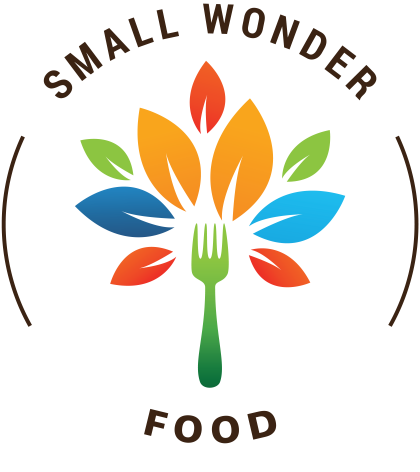
First, I will get on my soapbox. I have a huge problem with how children are often fed in our society. Many parents opt for junk for the sake of convenience and lack of resistance. I believe that teaching our children how to fuel their bodies may be the most important lesson we can ever impart. Food illiteracy begins at home. It starts with kids eating rainbow-colored fish crackers, chicken nuggets, and drive-thru meals. When we teach kids about food including what our body needs and how to find and prepare it, we are really teaching them how to care for themselves. It is an act of love from us to them AND and teaching them to love themselves. Growing up unable to feed yourself is a tragedy. Instead of taking the path of least resistance and easy convenience, parents need to constantly expose their kids to diverse, fresh foods. If, as a parent, you don’t have those skills yourself, it is time to take responsibility and change the tide. If you and/or your kids are living on junk food, it won’t be easy, but it will be 100% worth it.
I used to teach little kids (K-3) about gardening and nutrition. I saw a class for just 20 minutes per week, but it made a huge impact. They called me the “gardening lady,” but what I was really teaching was food literacy in 3 parts. First, we learned how to grow food. Second, we tried new foods every week. Third, we talked about nutrition. If I had had more time, we would have cooked as well. They loved all of it, but their favorite part was getting to try something new every week. At first, many of them were afraid to try a new food, but I am a pretty persuasive person and I leveraged positive peer pressure. Often, they surprised themselves by liking something “weird.” Unfortunately, it was quite evident how many of those kids were initially afraid of food. That fear is not there at birth, it is learned. It can be unlearned.
Some tips for getting kids eating better:
- Lead by example. Eat to love yourself.
- Include kids in shopping (one idea: have your child pick a piece of produce they never tried before at the store)
- Include kids in food preparation. Even a toddler can add blueberries to a salad.
- Educate! See my Food Literacy for Parents and Kids Bibliography.
- Grow some food. This can just be a pot with herbs in it. It does not have to be an elaborate garden. To keep my young students growing over school break, they all went home with a half bushel basket garden with three plants. All summer long, kids would send me pictures that showed their pride and excitement over their crops.
There are plenty of ways to introduce lots of brightly colored produce into the FAMILY diet. I say the family diet, because I do not think kids should get a different meal. I may make my daughter an alternate protein if I know we are having something she truly dislikes (for my kid, that’s lamb,) but not a separate “dumbed down” meal. I hope some of these ideas inspire you.
“Eating a Rainbow” is a fun way to challenge kids to eat better and a nutritional win.
Eating a rainbow every day ensures that a broad spectrum of vitamins, minerals, and phytonutrients make it into children’s growing bodies. Phytonutrients are the nourishing components of plants that do not fall into the categories of vitamins and minerals and are responsible for the bright colors of plant foods. A diet full of fresh fruits and vegetables is the best way to prevent chronic disease. The best choices are organic, locally grown, and recently harvested, but a whole fruit or vegetable is ALWAYS a better choice than a processed one. The deeper and richer the color, the more nutrient-packed it usually is. All fresh whole foods will help to keep us from getting sick.
You can even make it a family game. Make a chart, put it on your fridge, and anyone who eats their rainbow gets to gloat.
Rainbow salad. Serve a salad with every color of the rainbow. Here’s one combination: tomato, carrot, yellow bell pepper, spinach, red (purple) cabbage.
Rainbow smoothie: a handful each of strawberries, orange or tangerine sections, banana slices, fresh spinach or kale, blueberries (don’t overdo the greens—or you will have a very unappetizing color)
Rainbow Kabobs: cherry tomato, orange bell pepper, yellow squash, zucchini, eggplant. Brush with olive oil and grill.
Rainbow Fruit Salad: strawberries, orange sections, star fruit, green grapes, blackberries
Rainbow Slaw: shred red onion (not too much!), carrots, yellow bell pepper, green cabbage, and red (purple) cabbage and toss with your dressing of choice.
Kids like a challenge. Make eating new brightly colored fruits and vegetables a goal. Here are some out-of-the-ordinary things you may not have tried. You can find them by searching ethnic markets and farmers markets, or by growing them yourself.
Red—-red currant, rhubarb, pomegranate, blood orange, red carrot, watermelon radish (pink inside), red-fleshed potato
Orange—kumquats, golden “cheddar” cauliflower, persimmon, ground cherries,
Yellow—golden raspberries, “pineapple” tomatoes, Buddha’s Hand, star fruit, yellow wax beans
Green—gooseberries, fiddlehead fern, seaweed, green eggplants, Romanesco, kohlrabi, okra, tomatillos
Blue/Purple—purple and blue fleshed potatoes, purple cauliflower, purple carrots, purple kohlrabi, purple bell peppers, purple asparagus, black currants, figs, elderberries
White foods—white cucumbers, Dragon fruit (white inside), jicama, coconut, garlic, white carrots, white tomatoes, white currants
